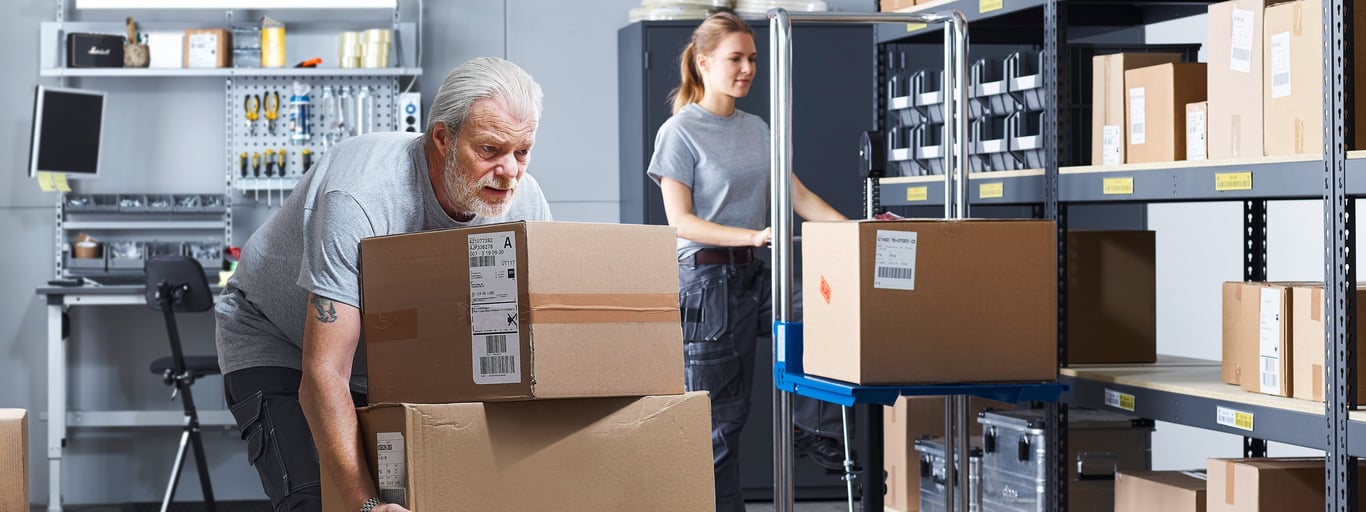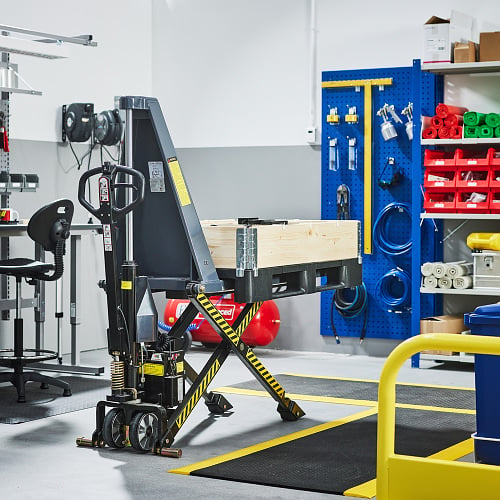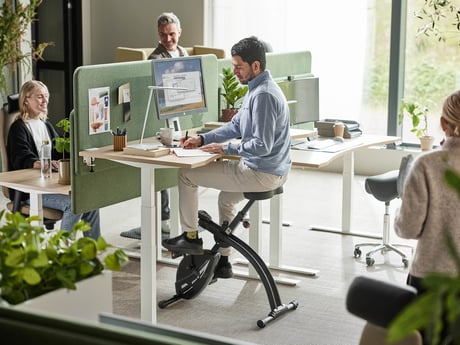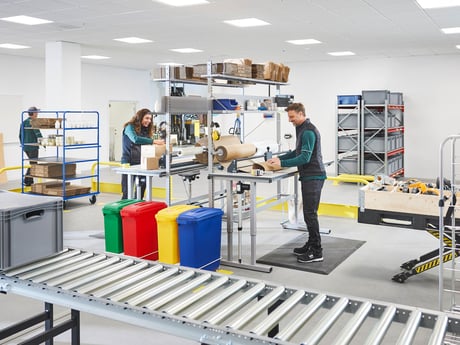- AJ Products UK
- Blog: Tips to Inspire Happiness at Work
- Tips & trends
- Tips for Increasing Material Handling Efficiency

Tips for Increasing Material Handling Efficiency in UK Warehouses
In this guide, we’ll share practical tips for improving efficiency while keeping your workforce safe and your warehouse running smoothly.
Maintain manual and warehouse lifting equipment properly
Any machine, be it manual or automatic, needs to be properly maintained. This can help increase its effectiveness and longevity, which is obviously beneficial for warehousing activities. For example, transport equipment ranging from simple devices, such as a platform trolley, to large and complex ones, such as a forklift truck, are commonly used for ferrying goods. If these machines are not regularly oiled, cleaned and checked for irregularities, they might malfunction. This could affect the entire material handling chain in the warehouse, leading to inefficiency. Hence, ensuring equipment is kept in optimal condition is extremely important for good warehouse management, especially with respect to material handling.
- Check all moving parts for wear and tear.
- Ensure hydraulic systems on lift jacks and mini stacker trucks are functioning correctly.
- Replace worn wheels on lifting trolleys and pallet trucks to prevent accidents.
- Maintain machine skates to ensure smooth transport of heavy equipment.
Train your workforce for safer manual handling
Warehouse labour often accounts for at least 50% of the total operating costs. Businesses in this sector might incur further costs if their employees do not work effectively. This might badly affect the material handling processes, thus leading to a decrease in business productivity. To avoid this, management should follow a few simple steps.
Firstly, appropriate training should be provided to the workers so that their knowledge and working efficiency can increase.
Businesses should also make sure that the workforce abides by any safety protocols in order to minimise the risk of injuries or damage in the event of an accident.
One of the best ways to ensure that the warehouse runs efficiently is division of labour. By assigning sufficient personnel to every sub-process, all parts of the process will operate smoothly, thus maximising overall output.
Businesses can also cross train employees so that they learn about different parts of the business and can handle a variety of processes apart from the one to which they have been assigned. For example, a labour force that handles transportation equipment like pallet jacks and transport trolleys can also be trained to take part in racking and shelving processes

Use the Right Tools for Every Task
Selecting the correct manual handling and warehouse lifting equipment is essential for efficiency:
- Pallet trucks: Ideal for moving heavy pallets over short distances.
- Stacker trucks & mini stackers: Efficient for lifting and stacking goods in tight spaces.
- Lift tables: Reduce strain during loading and unloading, improving ergonomics.
- Lifting trolleys & jibs: Support safe handling of irregular or bulky loads.
- Machine skates: Enable safe transport of machinery or oversized items.
Leverage warehouse technology
Technological developments have also entered the sector of warehousing. Using Warehouse Management Software (WMS) Programs is an example of technological development that can help increase warehousing processes. Those businesses that haven’t yet adopted management software should consider changing their working processes. By following this tip, businesses can increase the efficiency of their material handling systems.
Integrating technology with manual and lifting equipment ensures a smooth material handling process and reduces human error.
FAQ about material handling
- Using the right lifting tools reduces physical strain, minimises handling time, and allows staff to move heavier loads safely, boosting productivity.
- Compact options like mini stackers, pallet trucks, and lift jibs are ideal for smaller spaces, allowing flexibility and safe material handling.
- Regular maintenance should be carried out according to the manufacturer’s guidelines, typically with daily visual checks and scheduled servicing for mechanical parts.
- Yes. The HSE provides guidance on manual handling, including risk assessments and proper use of lifting equipment, to ensure employee safety in workplaces across the UK.



